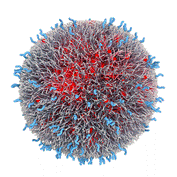Center, Biotechnology

Nebraska Center for Biotechnology: Faculty and Staff Publications
Document Type
Article
Date of this Version
2014
Citation
New Phytologist (2014) 201: 1358–1370
Abstract
Pseudomonas syringae type III effectors are known to suppress plant immunity to promote bacterial virulence. However, the activities and targets of these effectors are not well understood. We used genetic, molecular, and cell biology methods to characterize the activities, localization, and target of the HopD1 type III effector in Arabidopsis. HopD1 contributes to P. syringae virulence in Arabidopsis and reduces effector-triggered immunity (ETI) responses but not pathogen-associated molecular pattern-triggered immunity (PTI) responses. Plants expressing HopD1 supported increased growth of ETI-inducing P. syringae strains compared with wild-type Arabidopsis. We show that HopD1 interacts with the membrane-tethered Arabidopsis transcription factor NTL9 and demonstrate that this interaction occurs at the endoplasmic reticulum (ER). A P. syringae hopD1 mutant and ETI-inducing P. syringae strains exhibited enhanced growth on Arabidopsis ntl9 mutant plants. Conversely, growth of P. syringae strains was reduced in plants expressing a constitutively active NTL9 derivative, indicating that NTL9 is a positive regulator of plant immunity. Furthermore, HopD1 inhibited the induction of NTL9-regulated genes during ETI but not PTI. HopD1 contributes to P. syringae virulence in part by targeting NTL9, resulting in the suppression of ETI responses but not PTI responses and the promotion of plant pathogenicity.


Comments
New Phytologist copyright 2013 New Phytologist Trust
doi: 10.1111/nph.12626